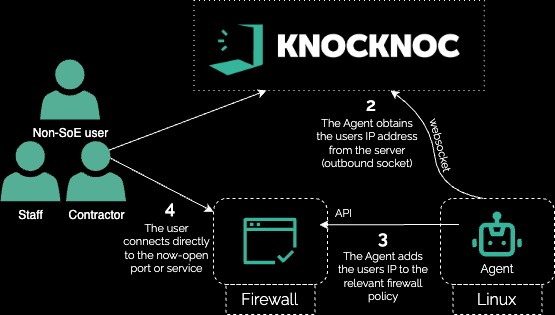VPN and Ransomware
Use Case: Removing VPN Ransomware Risk from Stolen Credentials
A mid-size business relied on Internet-exposed VPN appliances to provide extranet access for staff, contractors, and business partners. Due to legacy constraints, some external users still used single-factor credentials.
After stolen credentials led to a ransomware incident, the security team acted fast—deploying KnocKnoc to protect the VPN edge by orchestrating an existing in-line firewall.
The goal: eliminate Internet exposure of the VPN without changing network architecture or requiring client software—critical for the diverse, distributed user base.
The result: no exposed VPN, no user installation required, no routing changes, and a dramatically reduced attack surface.
Technical how:
In this example, an existing in-line Firewall appliance was orchestrated to protect the VPN and expose the services just-in-time to authenticated and authorized users.
A beneficial byproduct of the process was that all VPN user access permissions were reviewed, with many uplifted and migrated to their Entra External list allowing MFA to be enforced.

